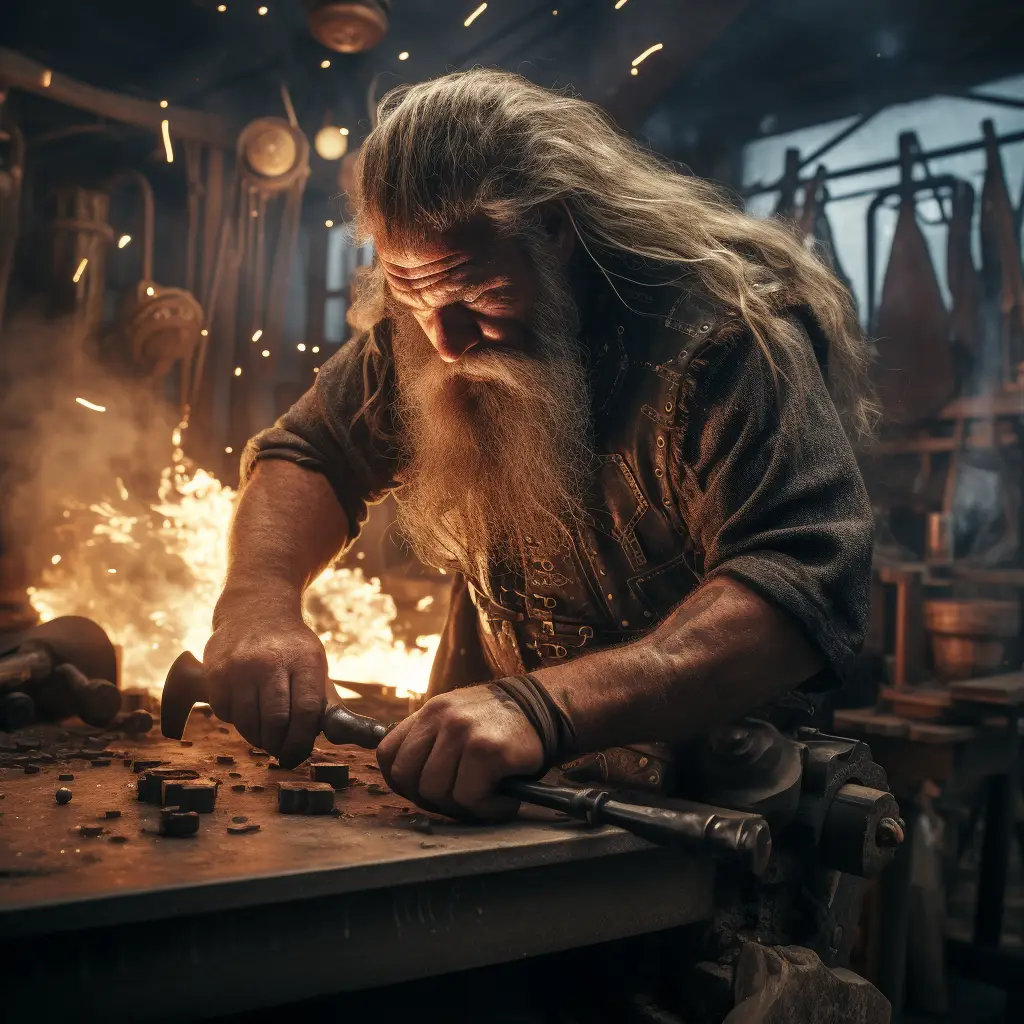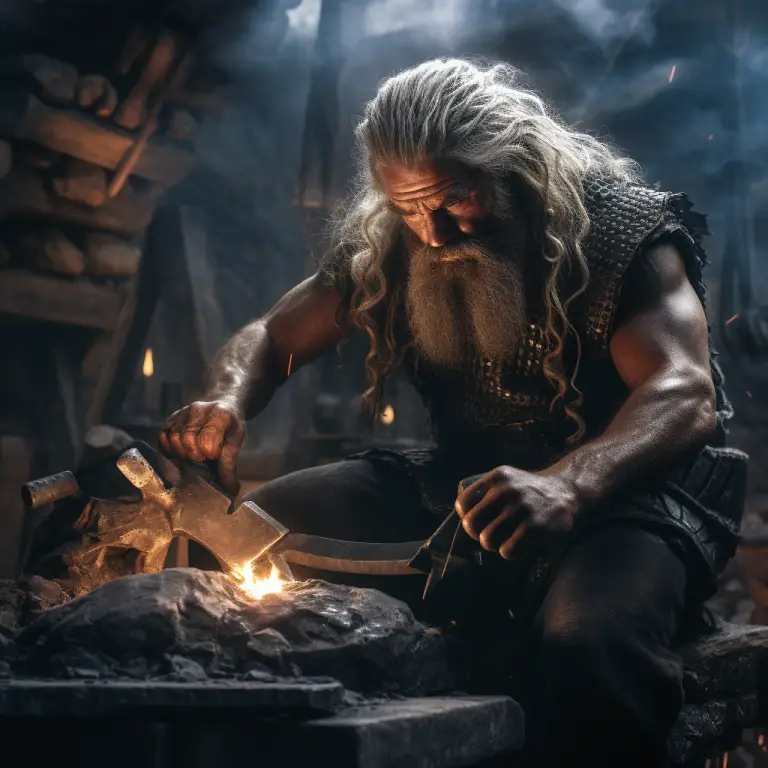Viking blacksmiths were skilled craftsmen who played a crucial role in Norse society. They were responsible for forging a variety of essential items, including weapons, tools, and everyday items. The weapons they created, such as swords, axes, and spears, were particularly important for Viking warriors and played a significant role in their raids and battles.
Viking blacksmiths used iron and other metals to create these items, employing techniques like forging, tempering, and pattern welding to enhance the strength and durability. The craftsmanship of Viking blacksmiths was essential not only for practical purposes but also for cultural significance, as weapons and tools often held symbolic value in Norse society.
The work of blacksmiths reflected the resourcefulness and ingenuity of the Norse people. Their skills contributed to the success of Viking expeditions, and their creations have become iconic symbols of Norse culture and history.
Viking blacksmiths used a variety of tools to forge weapons, tools, and everyday items. Here are some of the tools commonly employed by Viking blacksmiths:
- Anvil: A sturdy metal block on which hot metal is shaped. Anvils provided a solid surface for hammering and shaping the metal.
- Hammer: Blacksmiths used hammers to shape and flatten hot metal. Different hammers with various shapes and weights were used for specific tasks.
- Tongs: Essential for holding hot metal securely, tongs came in different shapes and sizes to accommodate various types of work pieces.
- Forge: Vikings used a forge to heat metal to malleable temperatures. Early forges were often simple setups with a fire pit and a bellows to increase airflow and heat.
- Quenching Trough: After shaping a piece, it would be quenched in water or oil to cool it rapidly, helping to set the desired properties.
- Bellows: Used to pump air into the forge, bellows increased the heat by supplying oxygen to the burning fuel.
- Chisels and Drifts: Chisels were used for cutting and carving, while drifts were used to enlarge holes in metal.
- Hardy and Fuller: Tools inserted into the hardy hole of the anvil, these were used for cutting and forming metal.
- Files and Rasps: Used for refining and shaping the metal after the initial forging.
- Swage Block: A multipurpose tool with various indentations and forms to shape hot metal into specific patterns.
It must have been quite a hard labour of love being a Blacksmith in Viking Times, minimal safety wear and a constant demand for weapons and tools.

